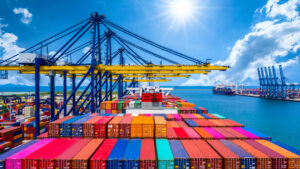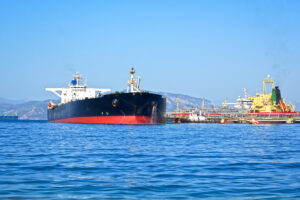Latest data reveals global ocean container shipping emitted all-time high carbon emissions in 2024, driven largely by the impact of conflict in the Red Sea. Global container emissions increased 14% in 2024 to 240.6m, comfortably surpassing the previous record of 218.5m tons of carbon set in 2021, according to the ocean and air freight intelligence platform Xeneta and Marine Benchmark.
Xeneta says this record-breaking statistic should not be used as a stick to beat the maritime freight industry with because it is largely due to ships sailing longer distances around the Cape of Good Hope following the escalation of conflict in the Red Sea in December 2023.
A new record high is the inevitable outcome of these diversions, both in terms of the increase in transport work and the record-high demand of laden containers being moved in 2024 as shippers responded to the Red Sea crisis by frontloading imports.
Overall transport work (a measurement of tons of cargo moved multiplied by nautical miles sailed) increased 18% in 2024.
The biggest increases in carbon emissions came from the largest ships, with these also the ones to experience the biggest increases in transport work.
According to the data released by Xeneta and Marine Benchmark last week, emissions from ships between 14 500 and 20 000 TEU hit 24.2m tons in 2024. This is up 7.3m tons (+43%) compared to 2023.
Ships over 20 000 TEU also saw large increases, up 35% from 2023 to 19.6m tons.
Across many ship sizes the increase in emissions in 2024 is within a few percentage points of the increase in transport work.
For example, ships between 14 500 and 20 000 TEU saw transport work increase 43%, in line with its growth in emissions.
This significant increase in transport work has in part been made possible by fleet growth of 26% between December 2023 and December 2024 for ships with capacity between 14 500 and 20 000 TEU.
There are however some exceptions where transport work growth and emissions growth aren’t aligned.
On the positive side, emissions increases for smaller size ships are lower than transport work. This is driven by improved efficiency through higher capacity utilization and stable (if not slightly decreasing) average sailing speed.
On a less positive note, the biggest ships over 20 000 TEU saw emissions increase 35% in 2024, more than double the 16.6% transport work growth.
To read the full report pls see here.



